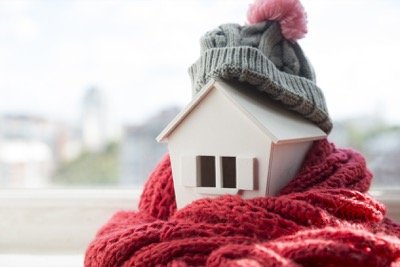What to Know About Re-Insulating Your Home
Posted by Edmonton Homes.ca on Tuesday, July 23rd, 2019 at 10:20am.
 Insulation is important for maintaining a consistent and comfortable temperature in the home. If your home isn't properly insulated, you could spend hundreds of extra dollars heating your home in winter, or cooling your home in summer.
Insulation is important for maintaining a consistent and comfortable temperature in the home. If your home isn't properly insulated, you could spend hundreds of extra dollars heating your home in winter, or cooling your home in summer.
Older homes often lack proper insulation. Knowing the signs of poor insulation and improving your home's insulation can help you take care of your home. When the time comes to sell your home, a well-insulated property may sell faster than a poorly insulated one. Here's what you need to know.
Signs Your Home Lacks Insulation
It's not difficult to identify a home that has poor insulation. Here's what to should watch out for:
- Uneven temperature from one room to another.
- Pipes freeze in winter.
- Ice dams form in winter.
- Inability to maintain consistent temperature from one day to another.
- Cost of heating and cooling is rising.
- Space next to windows gets hot in summer, cold in winter.
- Rooms are drafty when temperatures outside are cold.
Watching for these signs can help homeowners decide whether their home needs more insulation. The walls and floors of the home should be warm and dry. If the walls and floors are especially cold or hot, this is a sign of poor insulation.
How to Tell if Your Walls are Insulated
For many homeowners, it's not too hard to check whether their home's walls are insulated. One of the easiest ways to check is to pry off a baseboard and examine the wall behind the baseboard. Dry wall often has a gap between the wall and floor. In a home with proper insulation, the insulation will appear in the gap between the wall and floor. If there is no insulation, the gap will appear empty.
Another way that homeowners can tell if the walls of their home are insulated is to cut a hole in the drywall behind the baseboard. When the baseboard is put back in place, the hole is covered up and does not need to be repaired.
Quick Ways to Improve Insulation
For a homeowner on a budget, there are other quick and relatively inexpensive ways to improve insulation in the home.
Install Insulation in the Attic
Attic insulation is typically unrolled over the floor of the attic, between joists. Sometimes insulation is blown into the attic to fill the spaces between the joists. Either way, when there is enough insulation, it should rise over the tops of the floor joists. If there is not enough insulation, the tops of the floor joists will remain visible.
Adding insulation to the attic is important because attics can get very hot or cold, depending on the weather outside. This excessive heat or cold in the attic can affect the temperature of the rooms below. By improving insulation in the attic, the homeowner can make the temperature of the entire house easier to regulate.
Weatherstrip
Weatherstripping is another form of insulation. Most homeowners weatherstrip at least once a year to keep out the cold or hot temperatures outside. Weatherstripping often takes the form of rubber or foam strips that can be used to fill the gaps between the windows, doors and their frames. Other forms of weatherstripping may include plastic sheeting fitted over windows, and rubber door thresholds to prevent cold air from rolling in under the door.
Work with a Contractor to Install Insulation Properly
Weatherstripping and attic insulation can only go so far. If your Spruce Avenue home remains uncomfortable even if you've installed insulation and weatherstripping, work with a contractor to improve insulation in your walls and floors. It's important to work with a contractor any time you're installing insulation, because improper installation could lead to a buildup of condensation, which could lead to mold.

